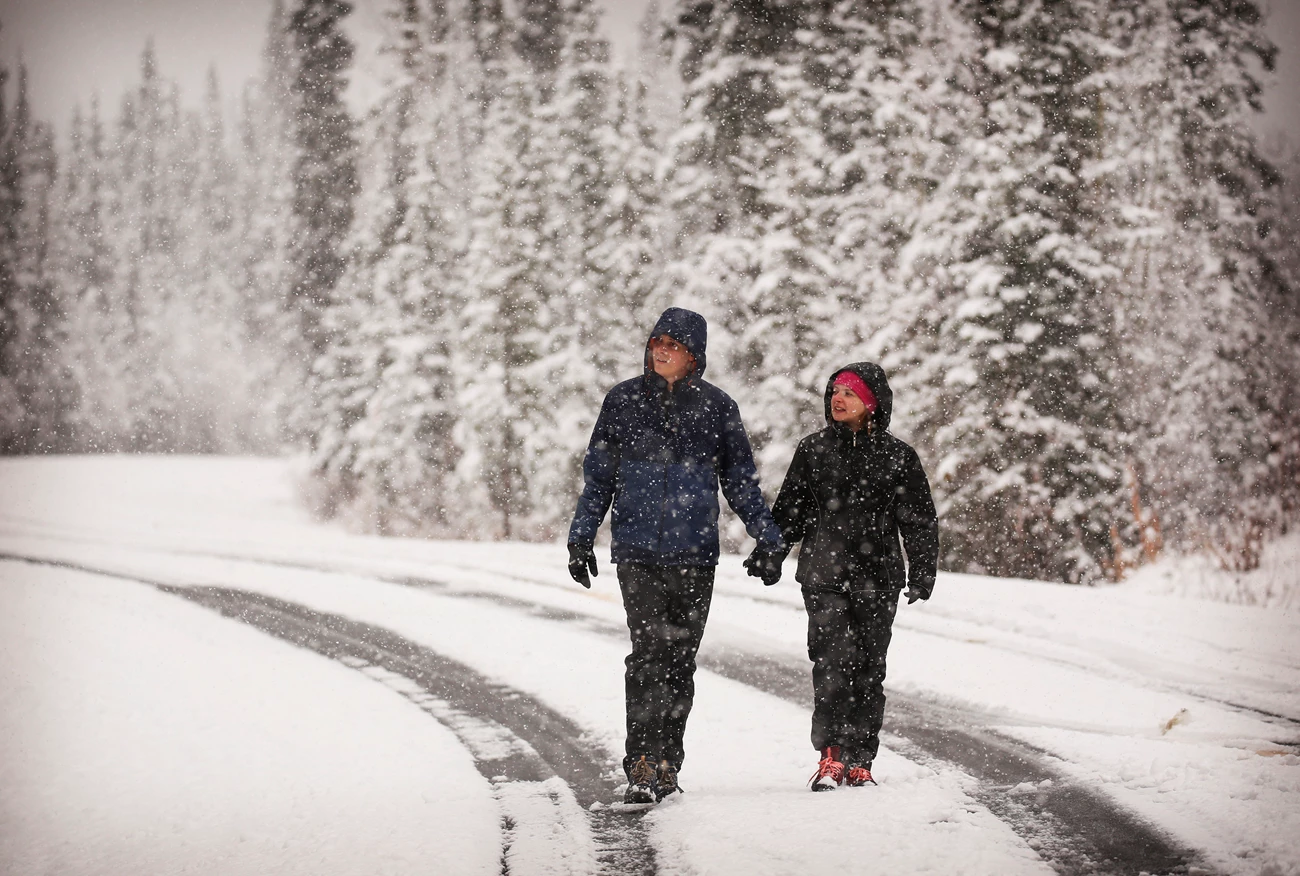Last updated: April 2, 2025
Article
Winter Hiking Tips

NPS Photo
Hiking in winter can be a beautiful thing. There's nothing like the hush that falls while snow blankets a forest. But remember- when you head outdoors you leave behind the established comforts of home: food and water; shelter from the sun, wind, and weather; and easy access to emergency services. Before heading to your favorite national park in snowy weather, keep these winter hiking tips in mind.
Before heading to the park
- Be prepared. Bring the right gear: layers of clothing, warm outer layers, sunglasses and sunscreen, and lots of water and snacks. Traction devices are always recommended when walking on ice and snow. See a list of winter hiking essentials below.
- Know where you are going. Don’t rely on cell phones. Many areas have no service. Carry a map and compass (or GPS) and know how to use them.
- Check the weather forecast. Weather can change quickly, especially if you are visiting higher elevation.
- Know trail conditions in your park before your start.
- Consider leaving pets at home. Pets are prohibited on many park trails. Check with your park for specifics before you make your plans.
- Discuss your plans with family, friends, and park staff at visitor centers. Make sure someone knows where you are and when to expect your return.
Hiking Tips
- Snowshoes and traction devices are recommended on ice and snow.
- In winter, some trails are not marked or maintained. Route-finding skills are important. Don’t rely on others' tracks which can lead you astray. Be aware that it is common courtesy not to trample on existing cross-country ski tracks as it can trip up skiers.
- Know your route. Snow-covered landscapes look very different than in summer. Snow can be deep once you are off trail.
- Keep off ice. Streams and lakes can have thin ice and be very dangerous.
- Be avalanche aware. Check with your park for the latest safety information and avalanche forecast.
- Always be willing to turn around. Weather and trail conditions can change quickly as snow falls and melts.
- Watch for wildlife. Always keep your distance and practice safe wildlife viewing practices.
Winter Hiking Essentials
- Food – especially salty foods. Eat a good meal before your trip.
- First Aid Kit – bandaids, ace wrap, antiseptic, moleskin, etc.
- Map – not all tails are well-marked in winter, maps are helpful tools.
- Water – plain and some with electrolyte replacement.
- Appropriate Footwear – waterproof boots, gaiters to keep snow and mud out of your boots.
- Over-the-shoe traction devices – it will only take a short and unexpected stretch of ice to make you glad you have extra traction.
- Hiking Poles – to help with footing on icy trails.
- Whistle and/or Signal Mirror – for emergency use, know how to use your equipment.
- Waterproof/Warm Clothing – parka, hat, gloves for the snow and rain, plus an extra set of dry clothing – in case you get wet.
